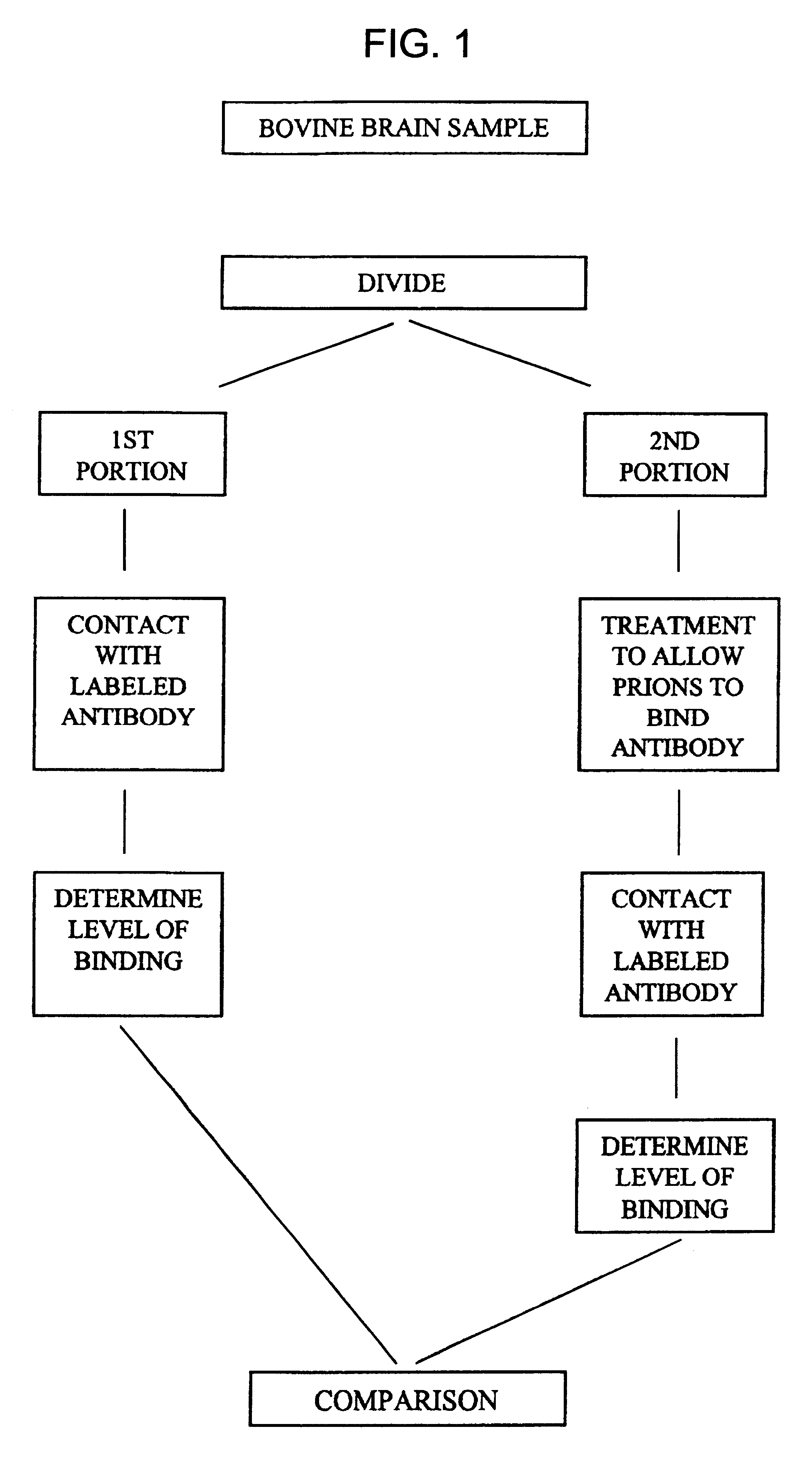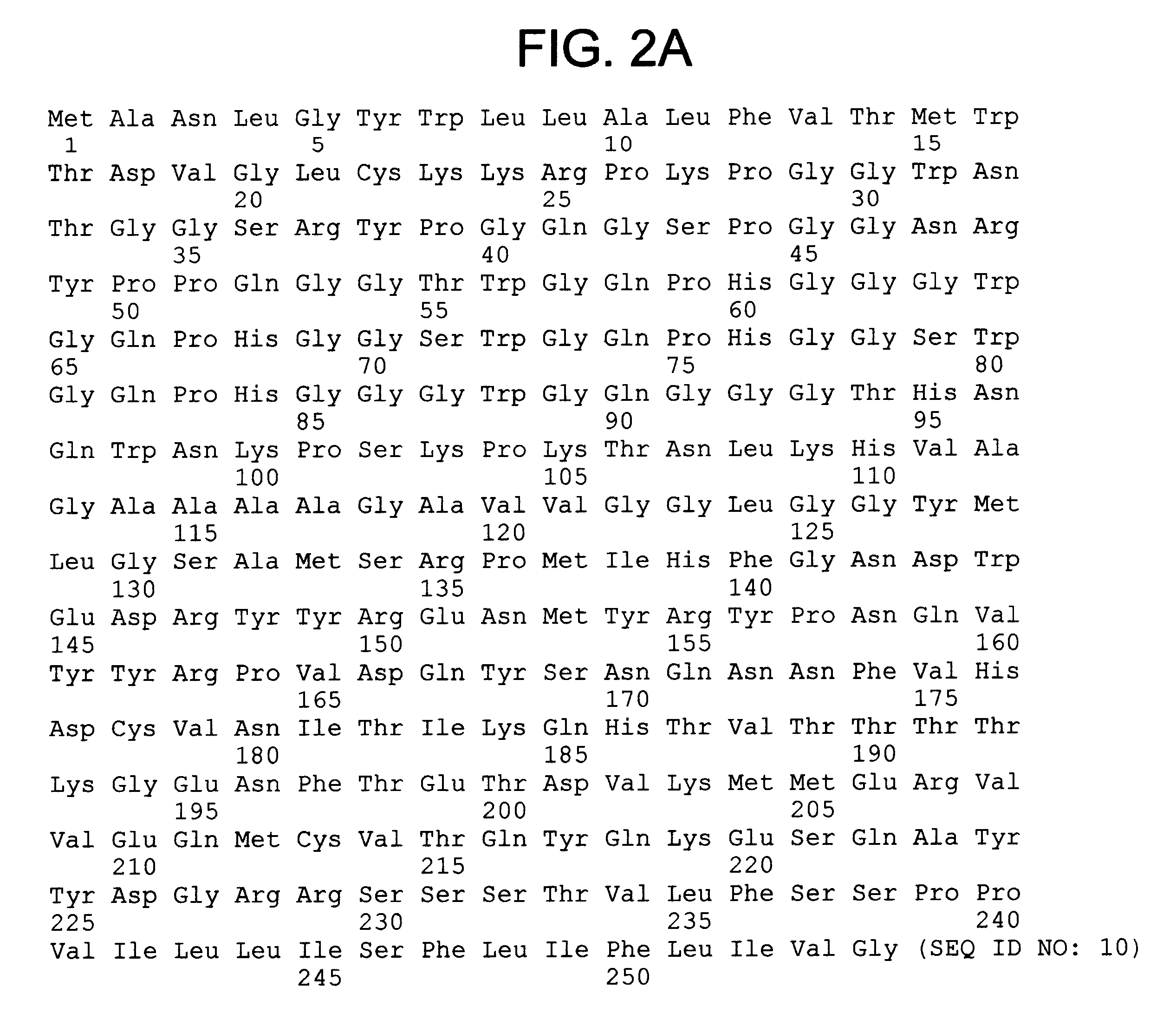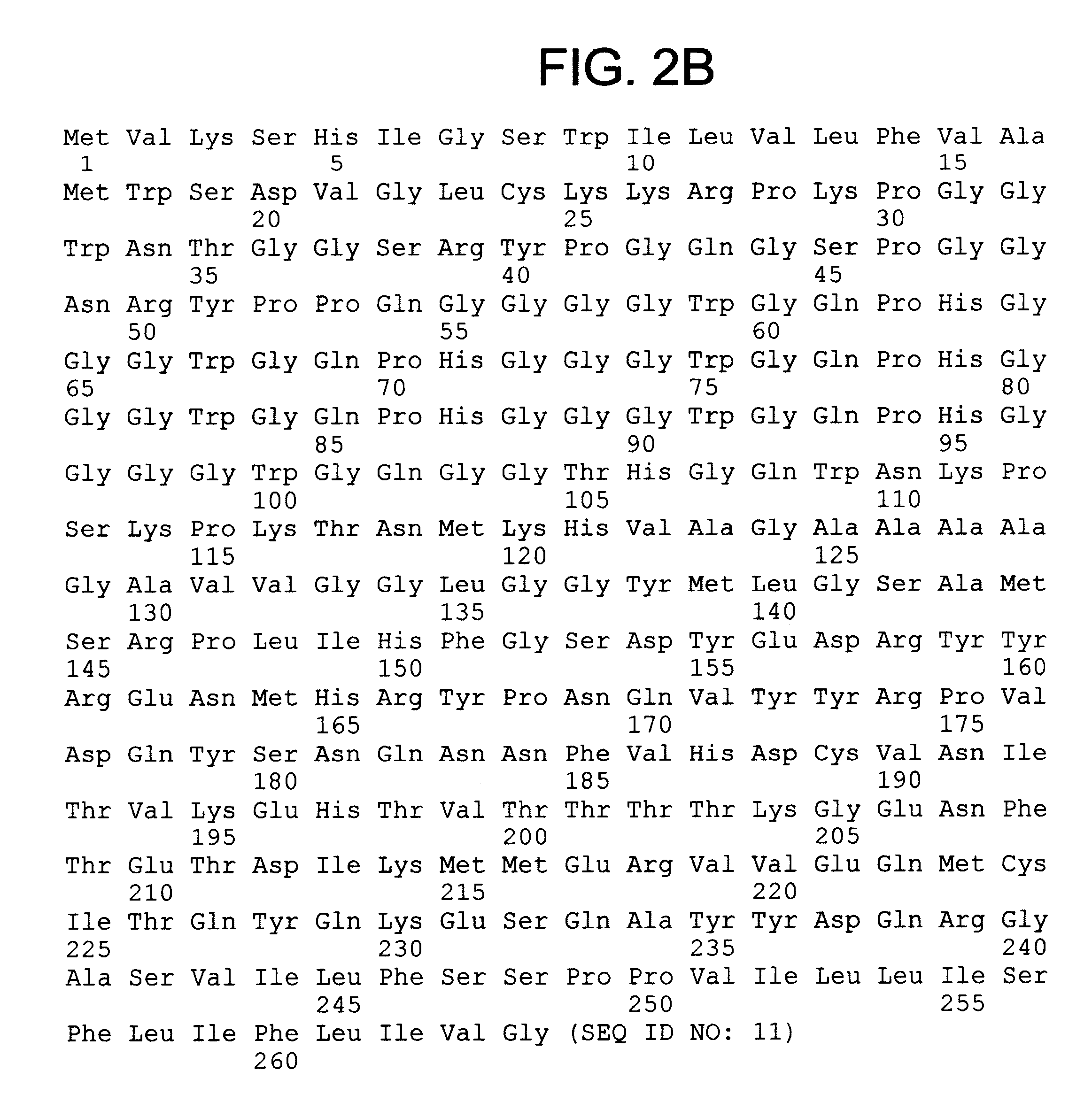Antibodies specific for ungulate PrP
a technology of ungulate prp and antibodies, applied in the field of antibodies specific for ungulate prp, can solve the problems of affecting the survival of ungulates, and affecting the survival of ungulates, and achieves the effects of low levels of prp.sup.sc, high detection efficiency, and rapid assay speed
- Summary
- Abstract
- Description
- Claims
- Application Information
AI Technical Summary
Benefits of technology
Problems solved by technology
Method used
Image
Examples
example 1
Identification and Isolation of Anti-bovine Antibodies
Antibodies that recognize bovine PrP.sup.C or denatured PrP.sup.Sc were produced using Prnp.sup.0 / 0 mice. Mice were immunized with synthetic bovine PrP.sup.C peptide coupled to KLH and corresponding to residues 96-115 of bovine PrP. Phage display libraries were constructed from spleens from mice showing high titers of sera against the homologous antigen. Thereafter, we panned the library against synthetic peptides of varying length and selected over 32 different positive clones. The selected clones were screened by CDI-formatted ELISA and specifically evaluated by Western blot. The mouse was injected with bovine peptides to stimulate the formation of antibodies. The mouse is then sacrificed and bone marrow and spleen cells are removed. The cells are lysed, RNA is extracted and reversed transcribed to cDNA. Antibody heavy and light chains (or parts thereof) and then amplified by PCR. Identified light chain sequences were isolated ...
example 2
Detection of Chimeric Bovine PrP in Mouse Brain Homogenates
The isolated antibodies Eu-(HuM)Fab P and Eu-(HuM)Fab S were tested for sensitivity using the conformation-dependent immunoassay (CDI) to detect chimeric MBo2M PrP. The chimeric recombinant protein rPrP(MBo2M) was diluted into 5% PrP.sup.0 / 0 mouse brain homogenate and the two bovine anti-PrP.sup.C antibodies tested for their ability to detect the protein in its native PrP.sup.C form. Briefly, the brains of Prnp.sup.0 / 0 mice which do not express PrP protein were homogenized on ice by 3.times.30 sec strokes of PowerGen homogenizer (Fisher Scientific, Pittsburgh, Pa.) in PBS (pH 7.4). Resulting 10% (w / v) homogenates were spun for 5 min at 500 g at table top centrifuge. The supernatant was mixed 1:1 with 4% Sarcosyl in PBS (pH 7.4). The purified recombinant PrP(MBo2M) was diluted into the homogenate and each sample was divided in two aliquots: (1) untreated and designated native; (2) mixed with final 4M Gdn HCI and heated for 5 ...
example 3
Sensitivity of detection of Bovine PrPSC in Mouse Brain Homogenates
Bovine PrP.sup.Sc was detected in BSE-infected Tg(BoPrP) mouse brain homogenates using Eu-(HuM)Fab P. Samples containing serial dilutions of BSE-infected 5% (w / v) brain homogenate in 2% Sarcosyl (w / v), prepared as described in Example 2, were treated with 5 .mu.g / ml of Proteinase K and concentrated with 0.3% (w / v) NaPTA and 1.7 mM MgCL.sub.2 prior to CDI. Following PTA precipitation, each sample was divided into two aliquots: (1) untreated and designated native; (2) mixed with final 4M Gdn HCt and heated for 5 min at 80-100.degree. C. and designated denatured. Both samples were diluted 20-fold by H.sub.2 O and aliquots loaded on polystyrene plate activated for 1 hr with 0.2% glutaraldehyde in PBS. The plates, incubated overnight at 5.degree. C., were blocked with TBS (pH 7.8), containing 0.5% BSA (w / v) and 6% Sorbitol (w / v). They were then washed three times with TBS (pH 7.8) containing 0.05% (v / v) of Tween 20 and in...
PUM
| Property | Measurement | Unit |
|---|---|---|
| time | aaaaa | aaaaa |
| time | aaaaa | aaaaa |
| body weight | aaaaa | aaaaa |
Abstract
Description
Claims
Application Information
 Login to View More
Login to View More - R&D
- Intellectual Property
- Life Sciences
- Materials
- Tech Scout
- Unparalleled Data Quality
- Higher Quality Content
- 60% Fewer Hallucinations
Browse by: Latest US Patents, China's latest patents, Technical Efficacy Thesaurus, Application Domain, Technology Topic, Popular Technical Reports.
© 2025 PatSnap. All rights reserved.Legal|Privacy policy|Modern Slavery Act Transparency Statement|Sitemap|About US| Contact US: help@patsnap.com



